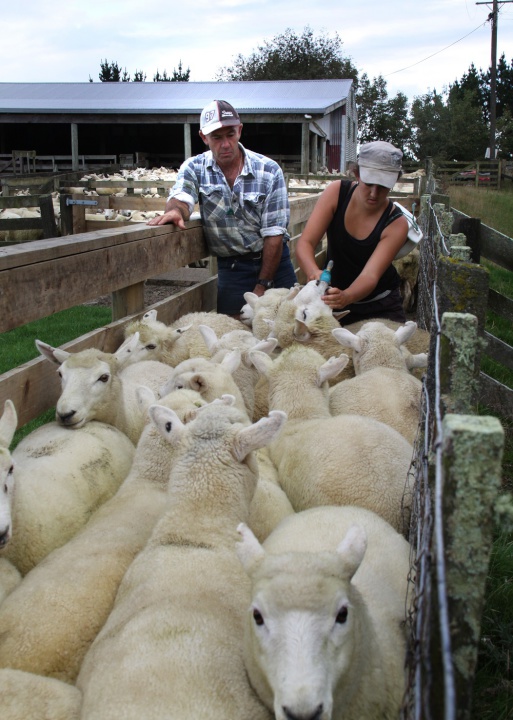Labour issues in booming sector

For
the past five years the surge in production and value from
almost every aspect of the primary sector has been welcomed
by rural New Zealand, and politicians alike. However that
growth which has last year’s total primary sector exports
totalling a massive $45 billion for 2018, or two thirds of
this country’s total material exports has also resulted in
some serious labour shortages starting to threaten the
sector’s ability to continue its productivity march.
Whether it is planting pine trees or packing export kiwifruit, there is a demand for committed workers keen to make a career in the primary sector.
In the kiwifruit sector alone this season the shortage of staff was estimated to be about 2500, prompting New Zealand Kiwifruit Growers Incorporated to embark on a concerted effort to recruit more locals to help over the busy packing season.
Estimates are the sector will need another 7000 seasonal employees by 2027. With the ambition to get another 700ha of SunGold fruit in the ground every year for the next four years, the sector will also require a larger number of skilled staff, with estimates every 50ha demands one new manager.
One of the challenges for the horticultural sector has been housing seasonal staff- often demand for staff is in areas where housing prices are already high, such as the Bay of Plenty making the task of filling those positions even tougher.
Often those workers are on the Recognised Seasonal Employer (RSE) scheme from the Pacific Islands and without family support to accommodate them while here.
Orchardists in Hawke’s Bay may soon find it easier to accommodate staff for their booming apple picking demand, just as it predicts the current 4000 RSE workers employed now may double by 2022.
Changes to Hasting’s district plan will soon make it easier to accommodate these staff. At present the plan only allows for small production zone based worker employment. The plan’s variation will allow larger accommodation facilities to be built in light industrial zones where fruit processing often happens.
Meantime even the more traditional sheep and beef sector is experiencing a pinch for skilled staff as the sector enjoys one of the most consistent high returning periods it has seen since World War Two.
With average farm incomes pushing over $100,000 for the second consecutive season, the greatest challenge for some farmers is finding staff capable of managing larger farm operations to capitalise on the good times.
AgFirst’s 2019 financial survey of sheep and beef farms revealed farm profit before tax for 2018-19 was up 16% on 2017-18, bringing increased tax liabilities and increased expenditure on capital items alongside debt reduction.
Rob Macnab, director of farm advisory company Total Ag said more of his clients have worked to try and reduce the “churn” rate of their staff in recent years, appreciating that they are increasingly hard to replace. To do this they have allocated greater portions of farm expenses to labour, a cost factor that has also increased on average by 17% in the past year in part due to greater use of causal labour and the lift in the minimum wage rates.
“Many have got the terms and conditions of contracts with their staff tuned up, in terms of not only pay, but time off and responsibilities.
The next stage for some is to improve the quality of their accommodation, there are still farms out there where the standard is really not where it needs to be to attract good staff,” says Rob.
More remote farms in particular are struggling to attract good staff, and amenity value and internet connectivity rate as “must haves” for most staff. Larger farm sizes are demanding a greater level of skill across not only farm management but also in managing a team of staff. Rob says he knows of one position that was more akin to a CEO role overseeing an exceptionally large farming business.
“And the owner did not hesitate to pay the right person $200,000 a year for that position.”
Indications around the country are that more school students are becoming aware of the opportunities that lie in the primary sector. Agricultural and horticultural teachers in schools are reporting healthy numbers in year 12-13, and very strong interest in career days when students get to meet people working in the primary sector.
Duncan Ross, Bayleys national country manager says interest in farms for investment will often be guided by the quality of the staff already employed on that operation, and the ability to keep them there once the property is sold as a going concern.
“Having quality, engaged people already on the farm who know how it operates, its particular quirks and features is a real bonus for hitting the ground running when you take it over. Good systems and contracts in place to encourage those people to continue running the business will pay for themselves within a season if done properly.”
ENDS


 Science Media Centre: Cyclone Gabrielle's Impacts On NZ's Ecosystems - Expert Reaction
Science Media Centre: Cyclone Gabrielle's Impacts On NZ's Ecosystems - Expert Reaction RNZ: Parts Of Power System Could Be Out For 36 Hours In Event Of Extreme Solar Storm
RNZ: Parts Of Power System Could Be Out For 36 Hours In Event Of Extreme Solar Storm NZAS: New Zealand Association Of Scientists Awards Celebrate The Achievements Of Scientists And Our Science System
NZAS: New Zealand Association Of Scientists Awards Celebrate The Achievements Of Scientists And Our Science System Stats NZ: Retail Spending Flat In The September 2024 Quarter
Stats NZ: Retail Spending Flat In The September 2024 Quarter Antarctica New Zealand: International Team Launch Second Attempt To Drill Deep For Antarctic Climate Clues
Antarctica New Zealand: International Team Launch Second Attempt To Drill Deep For Antarctic Climate Clues Vegetables New Zealand: Asparagus Season In Full Flight: Get It While You Still Can
Vegetables New Zealand: Asparagus Season In Full Flight: Get It While You Still Can 



